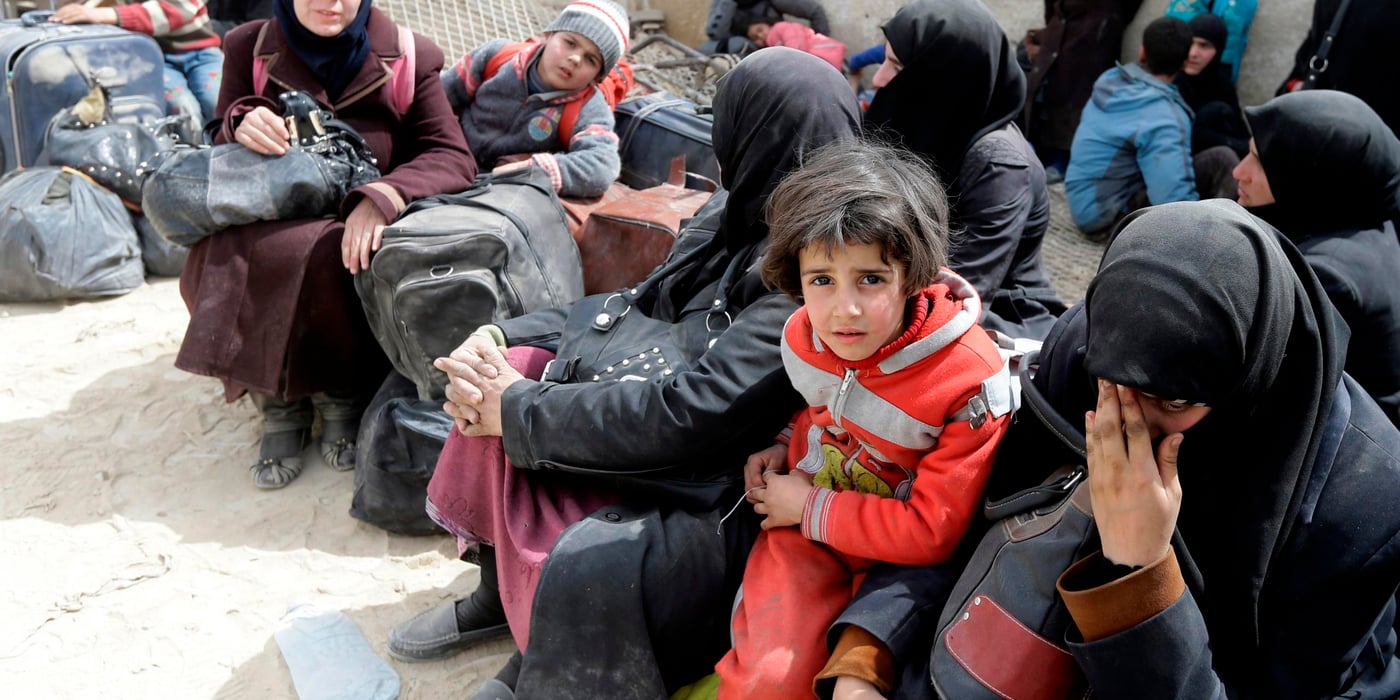
Fighting between the government and armed opposition groups controlling the area has dramatically escalated in the last month. Airstrikes and ongoing hostilities have forced thousands to abandon their homes. For years, international aid agencies have struggled to reach the besieged enclave with lifesaving aid, and large parts of the population are suffering from malnutrition. Since 18 February, close to 1,600 civilians have been killed, with death tolls rising by the day. One hundred thousand civilians have evacuated Eastern Ghouta, with thousands more fleeing each day, arriving at overcrowded and ill-equipped reception centres on the outskirts of Damascus. Those who have escaped tell stories of immense suffering.
Here are five things you need to know about Eastern Ghouta:
#1: What is Eastern Ghouta?
Eastern Ghouta is a suburb of the Syrian capital of Damascus and has been held by armed opposition groups since 2013. Before the war, the area, including the city of Douma, was home to almost 2 million people. On 18 February, the Syrian government launched a heavy offensive to regain control of the area.
#2: Why is Eastern Ghouta so important?
Eastern Ghouta is a strategically important area because of its close proximity to the capital, Damascus. It is also one of the last remaining areas outside of the control of the Syrian government and was until recently under siege for four years. 98 percent of Syria’s besieged population were located in Eastern Ghouta. Humanitarian access was near impossible for international aid agencies and reduced commercial exchange made life extremely difficult for the civilians inside. Armed groups have launched thousands of rockets into central areas of Damascus since 2013.
#3: What are the conditions like in Eastern Ghouta?
According to UN estimates, the enclave was home to almost 400,000 people prior to the recent military offensive. The residents of Eastern Ghouta have lived under inhumane conditions for a very long time, with restricted access to food, water, education and medical treatment. In the midst of bombing, women, men and children have sought safety in crowded and inadequate underground shelters, fearing for their lives. The price of bread is 22 times higher than in the rest of the country, and 12 per cent of children under five years old are acutely malnourished.
#4: Why are people leaving Eastern Ghouta now?
For years, leaving the enclave has been near impossible for civilians due to the siege imposed by the government. Even those in need of urgent medical attention were refused evacuation. In recent weeks, the government has regained control over large parts of Eastern Ghouta and some people have been able to leave, often under very difficult conditions and to places which are not ready to receive them.
#5: What help awaits those who have fled?
Those who have been able to leave Eastern Ghouta are severely malnourished, and fear for their immediate future. Our staff in Damascus report of massive humanitarian need, and the few existing shelters fill up quickly. Our teams are working around the clock to support people who have fled the violence, setting up tents, distributing blankets and other relief items as well as providing children with learning and recreational activities to address trauma. More than 95,000 people have reached these shelters in the past week.


